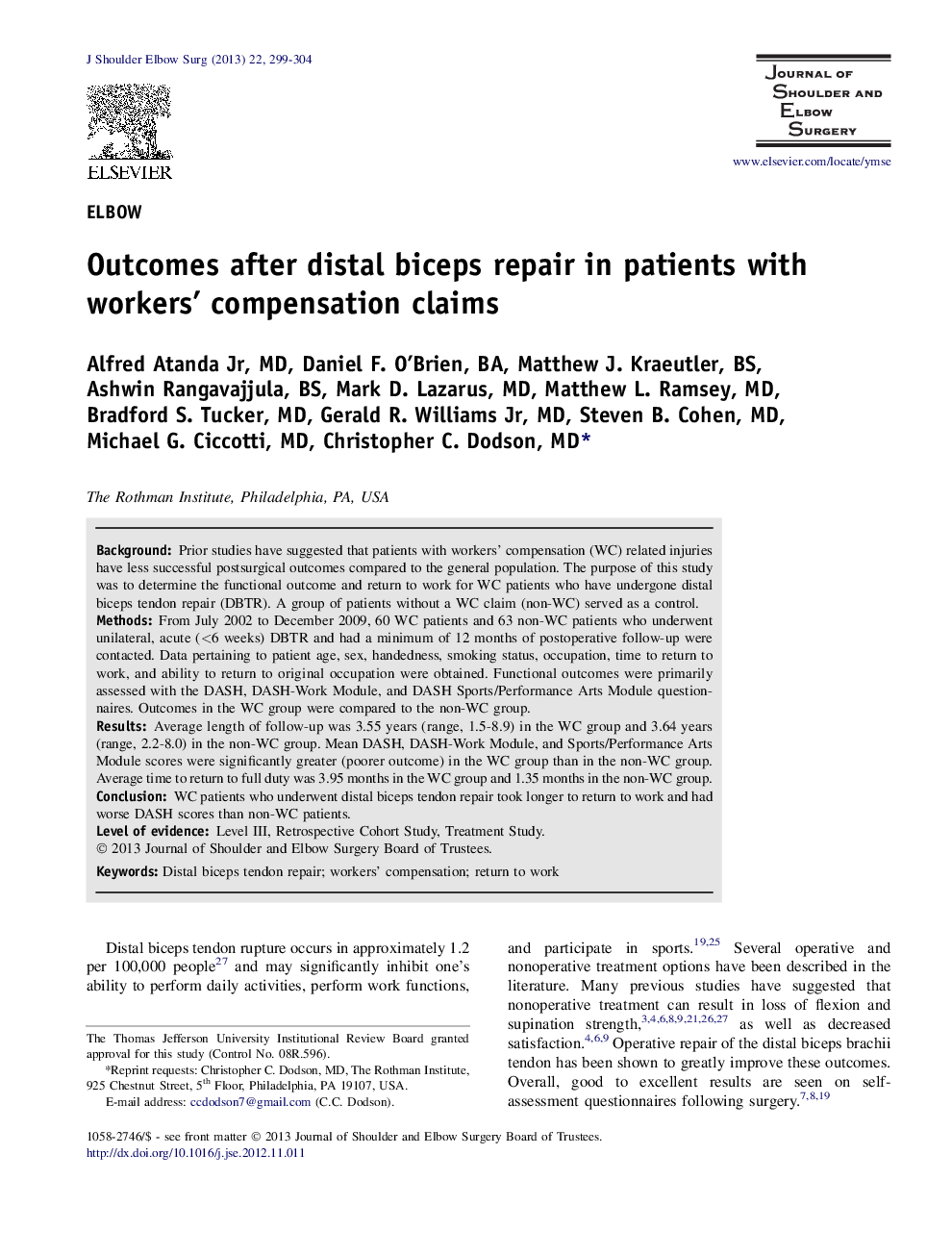| Article ID | Journal | Published Year | Pages | File Type |
|---|---|---|---|---|
| 4075195 | Journal of Shoulder and Elbow Surgery | 2013 | 6 Pages |
BackgroundPrior studies have suggested that patients with workers' compensation (WC) related injuries have less successful postsurgical outcomes compared to the general population. The purpose of this study was to determine the functional outcome and return to work for WC patients who have undergone distal biceps tendon repair (DBTR). A group of patients without a WC claim (non-WC) served as a control.MethodsFrom July 2002 to December 2009, 60 WC patients and 63 non-WC patients who underwent unilateral, acute (<6 weeks) DBTR and had a minimum of 12 months of postoperative follow-up were contacted. Data pertaining to patient age, sex, handedness, smoking status, occupation, time to return to work, and ability to return to original occupation were obtained. Functional outcomes were primarily assessed with the DASH, DASH-Work Module, and DASH Sports/Performance Arts Module questionnaires. Outcomes in the WC group were compared to the non-WC group.ResultsAverage length of follow-up was 3.55 years (range, 1.5-8.9) in the WC group and 3.64 years (range, 2.2-8.0) in the non-WC group. Mean DASH, DASH-Work Module, and Sports/Performance Arts Module scores were significantly greater (poorer outcome) in the WC group than in the non-WC group. Average time to return to full duty was 3.95 months in the WC group and 1.35 months in the non-WC group.ConclusionWC patients who underwent distal biceps tendon repair took longer to return to work and had worse DASH scores than non-WC patients.
